
Luiza Diniz: Young Yet Rich with Experience
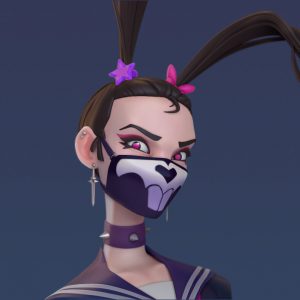 Only 24 years of age, Ms. Luiza Diniz already knows the 3D trade inside and out. She undoubtedly has wisdom that she had acquired through interest and formal study. But what put her on the map is sheer talent.
Only 24 years of age, Ms. Luiza Diniz already knows the 3D trade inside and out. She undoubtedly has wisdom that she had acquired through interest and formal study. But what put her on the map is sheer talent.
Her works online are eye-candies and indicative of her discipline and education. She got her degree in Game Design at PUC Minas University and had worked as a freelance artist for 2 years. Ms. Diniz recently started her first studio job as a 3D Artist for games at Aquiris.
In this short feature, Ms. Luiza Diniz walks us through her education, experience, insight, and complete understanding of the industry through her love of the digital craft.
Xeno Creatives (XC): Has producing 3D art always been a passion? How did it start for you?
Luiza Diniz (LD): As with most artists, I started as the creative kid who was always drawn to dancing, sculpting, drawing, and all sorts of artsy things. It was not until at the university, however, that 3D software became part of my life. My first exposure was being an architecture student. Afterwards, I entered a Game Design School wherein a friend introduced me to ZBrush to which I was hooked.
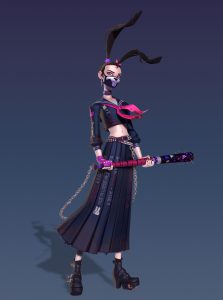 XC: What’s it like being a part of the 3D culture?
XC: What’s it like being a part of the 3D culture?
LD: The 3D culture, especially for Brazilians, is a lifestyle, not just a career choice. We are drawn to getting involved with the community; to always learning more; to being updated with what’s new and sharing knowledge. I recently went to an art event in Curitiba, Brazil, called, “The Topia Art Experience”. There were over 700 people, including Glauco Longhi, Igor Catto, Leticia Gillett, Natalia Freitas, Victor Hugo Queiroz, Alex Oliver and several other amazing artists in the industry. It was a three-day experience of lectures, workshops and talks that showed how much artists are willing to get to know each other and grow together.
As with any community, ours has its challenges, and I believe that now, during this moment of growth and valorisation of our field, it would be interesting for us to take a step back and start thinking about a few issues. For example, the importance of not romanticising overworking yourself and burnout syndromes, as well as the crunch culture in studios, and thinking about what we can do to keep our work conditions healthier, both mentally and physically. I also believe it’s important to think about why we produce content and whom we do it for—If we are not just reproducing what is seen in mainstream media and how we can use our life experiences and the culture we live in to improve the art we create.
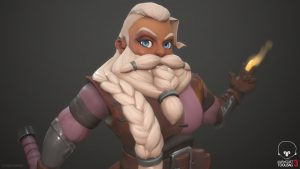 XC: Who or what would you consider your biggest influence? Was there ever an art piece (digital or otherwise) or artist who got you thinking, “Yeah, I want to be a 3D artist”?
XC: Who or what would you consider your biggest influence? Was there ever an art piece (digital or otherwise) or artist who got you thinking, “Yeah, I want to be a 3D artist”?
LD: My favorite 3D artist today is Maria Panfilova, who makes amazing pieces that are filled with life, drama, and artistic expression. I want to be able to have that in my work one day. She is also heavily influenced by Beth Cavener, who happens to be my favorite traditional sculptor. I also look up to people like Manuel De George, Letícia Gillett, and Ben De Angelis “Follygon”, for their clean, stylized, and beautiful work.
I don’t have a specific art piece that made me want to be a 3D Artist. However, there is one game that made me fall in love with game art and that is “Final Fantasy XII”. I remember very well, playing it for the first time. I was around fifteen then, thinking “this is as beautiful as games can get”. We can see now that I was very wrong. But, in my mind, FFXII is still one of the most visually-pleasing games I’ve seen. I won’t ever play it again though, so I don’t break this illusion!
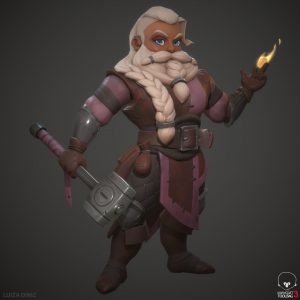 XC: Could you describe how your day looks like in production?
XC: Could you describe how your day looks like in production?
LD: I’m part of a small team that has started developing a game for the Apple Arcade, so my day-to-day is currently working together with other 3D artists and the concept team, to make assets and characters. We use the standard workflow that includes high poly modelling, using ZBrush, animation-friendly retopology, and PBR texturing, using Substance Painter.
XC: What are the common challenges that a 3D artist like you encounters day-in, day-out in a project?
LD: Game artists always have to think about the final look of a 3D model inside the game. It means that in every step of the production, we have to keep in mind elements like animation, camera view, what kind of device is the game going to run in, what shaders will be used inside the engine, how the lighting is and how it will affect the model textures, among other things (that differ from making a model for a non-interactive media), where the artist has all the control about what the viewer will see.
Another great challenge is keeping the style and the artistic language cohesive among all elements in the game, that is, the player should see that all characters, assets and environments are part of a single world. For that to happen, there must constant communication between the art teams, many tests with the 3D models, and even moments where parts of the work must be redone to better fit the project style.
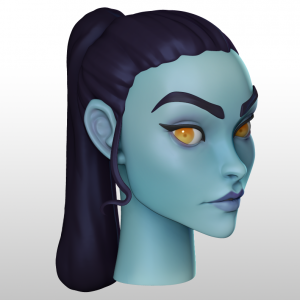 XC: What would you consider your biggest or most exciting project to date?
XC: What would you consider your biggest or most exciting project to date?
LD: The one I’m currently working on at Aquiris.
Working in a studio has been a very exciting experience, especially since I started working on the game at a very early stage, so being a voice in the decision process of the art style and the workflow has been very interesting and a learning experience I didn’t think I would have so early in my career.
XC: If you were to market yourself what would you highlight as your edge?
LD: I believe I would say that I’m a great student and that I’m not afraid of critiques. I’ve been a student all my life, and I really enjoy learning new things and I don’t mind stopping what I’m doing to research something that will improve my work.
 XC: If you weren’t a 3D artist today, what would you be?
XC: If you weren’t a 3D artist today, what would you be?
LD: I probably would have continued studying in Architecture School, graduated and would be trying to find a way to work with 3D in that field, but I’m really glad that I dropped out when I did.
Want to see more of Ms. Luiza Diniz’s works? Click here!

